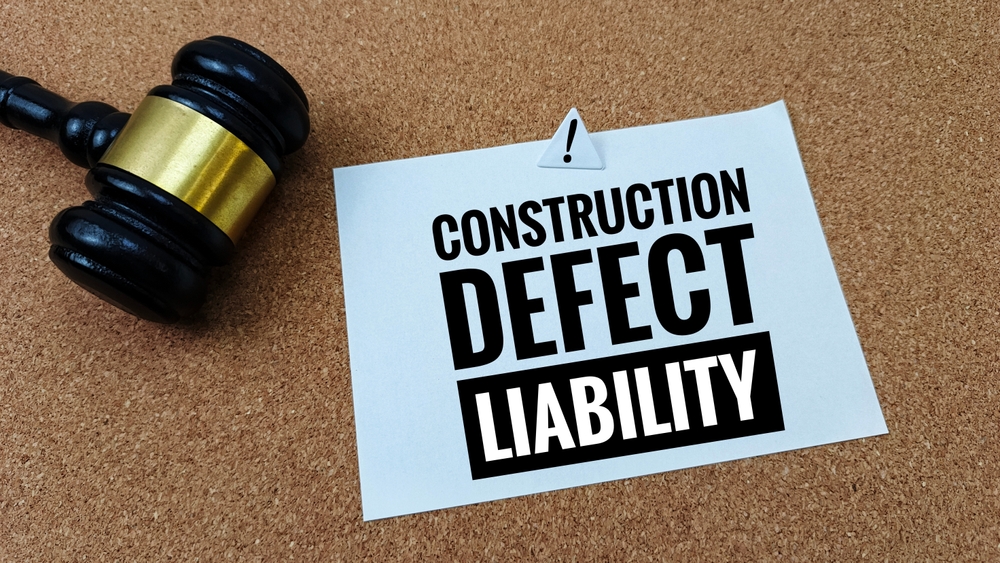

So, you’ve landed a stellar new contract, your crew and equipment are ready, and the weather is ideal to begin the work. All you have to do is sign the contract documents. You’ve done it a million times before, so you know what you’re getting into, right?
Did your handshake verbal agreement make it into the contract? Does the scope of work include all of the project goals? Don’t drown in unexpected costs because of a contractual nightmare that could have been avoided. Get your contract documents reviewed by an attorney so you know what you’re getting into before you sign the dotted line. Let’s jump into Contract Documents 101: Understanding the Basics of Subcontracts.
Within the contract documents, there are some inclusions that are standard. Typically, there are clauses about the project manual, the plans and specifications, and the terms and conditions. Hopefully, this information will help you understand what to look for in your contract and decide what is worth the risk or where you want to negotiate or if it’s better to walk away.
The terms of the contract between the owner and general contractor are normally included. If you are a subcontractor, you should ask for a copy of this contract so that you can be informed about the terms and conditions.
Usually, there are clauses about indemnity and insurance in the contract documents. The indemnity clause is a provision in which one party promises to compensate the other party for any harm, liability, or loss arising out of the contract. Make sure you understand how much the subcontractor is required to protect the work of others. Otherwise, you may pay for it in the long run.
An insurance clause is important because it dictates who will maintain builder’s risk insurance or if a subcontractor will need to get a policy of their own.
The scope of work outlines what you agreed to do. A good format includes the project name, project owner, and project location. The body of the contract documents will have a basic description of work to be performed under the subcontract. However, the actual details will be described in the plans and specifications.
If there is a delay in the project or a schedule issue that will cost you money, you will not be able to recoup that money. For example, if you have to mobilize several times because they are not ready for your scope of work or you have to move your scaffold several times due to issues that are not your fault, you will not be able to recover these costs.
Before you sign the contract documents, make sure to review the most recent plans and specifications, along with any project manuals, to ensure that they reflect the work you agreed to perform, verifying that only the work you agreed to do is included.
At The Cromeens Law Firm, we have extensive knowledge and understanding of construction contract laws and are licensed in Texas, Georgia, and California. We are often able to solve contract disputes for our clients through informal negotiations, mediation, or arbitration. Work with us to equip yourself with the ability to properly evaluate your risks before you sign and negotiate your next subcontract with greater confidence and ease.
Change orders can provide a new scope of work, but you will not get paid for any changes that increase the process unless they are approved in writing. What “in writing” means can vary between contract documents, so it is important to know what the specific contract says and follow those steps. However, if the contract is not specific, then a text message or email will work.
One of the most important terms in your contract documents are the payment terms.
The payment clause can show up in two different ways: the pay-when-paid clause and the pay-if-paid clause. Think of it as, “It’s not when you get paid, it’s if you get paid.”
The pay-when-paid clause does not affect the provisions within the contract that affect the timing of payment as long as the payment is to be made within a reasonable period.
A good pay-when-paid clause example: “General contractor shall pay subcontractor within seven days of contractor’s receipt of payment from the owner.”
The second kind of payment clause that can arise is the pay-if-paid clause, also known as the contingent payment clause. Yep, this is the one that can jump up and bite you in a bad situation. This clause shifts the burden of risk from the general contractor to the subcontractor.
You can read more about contingent payment clauses in a previous article.
The dispute resolution clause is a very important part of the terms of the contract documents. The American Arbitration Association (AAA) is the governing body for these kinds of clauses. Arbitration is usually very expensive-a $4,000 fee for each plaintiff and defendant plus a deposit (ranging from $4,000 to $6,800) against each party.
Arbitration is conducted through hearings that follow the same formula as a court case and can cost more than $25,000 in legal fees just for preparation. If your contract includes arbitration, negotiate for a mediation. Mediation is more informal and typically costs around $900 to $2,500 per party.
Do you have contract documents that need to be reviewed before you sign? The Cromeens Law Firm can help you achieve your project goals by ensuring that the contract you sign is in your best interest. Contact one of our experienced attorneys today. Contact us online to discuss your options and ensure that your assets are covered.
This article is intended as a general educational overview of the subject matter and is not intended to be a comprehensive survey of recent jurisprudence, nor a substitute for legal advice for a specific legal matter. If you have a legal issue, please consult an attorney.
Karalynn Cromeens is the Owner and Managing Partner of The Cromeens Law Firm, PLLC, with over 17 years of experience in construction, real estate, and business law. A published author and passionate advocate for contractors, she has dedicated her career to protecting the businesses her clients have built. Karalynn is on a mission to educate subcontractors on their legal rights, which inspired her books Quit Getting Screwed and Quit Getting Stiffed, as well as her podcast and The Subcontractor Institute.

